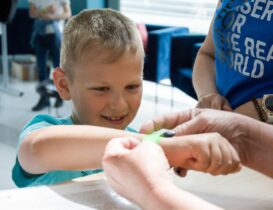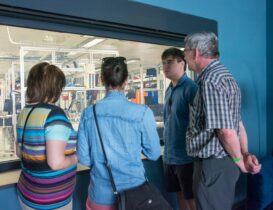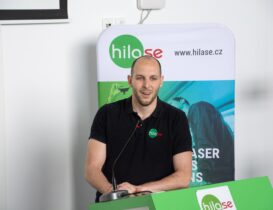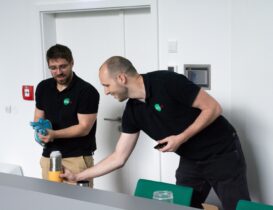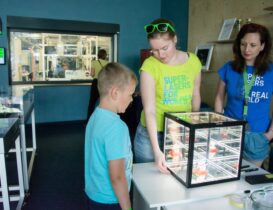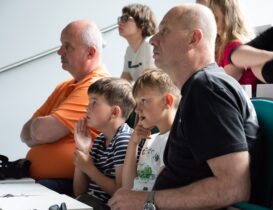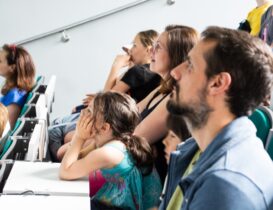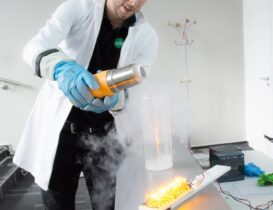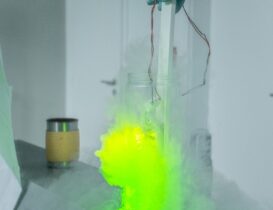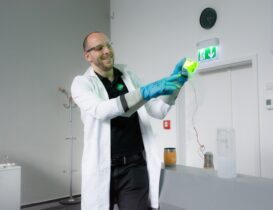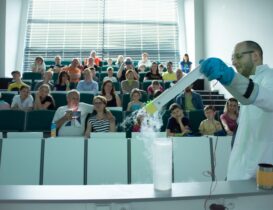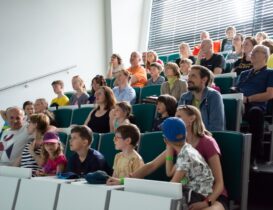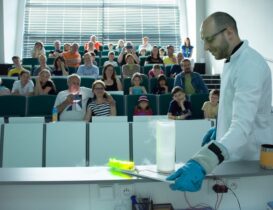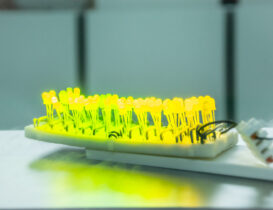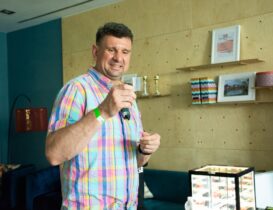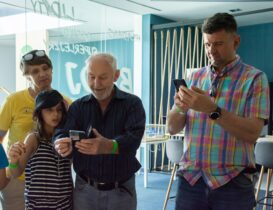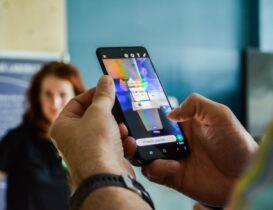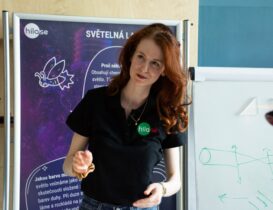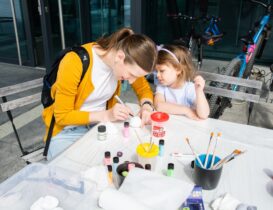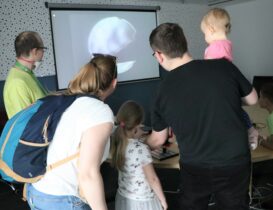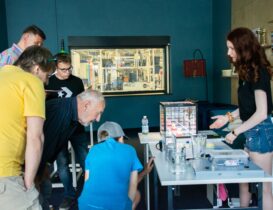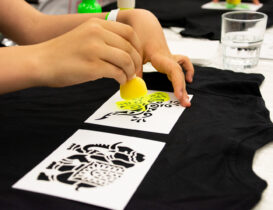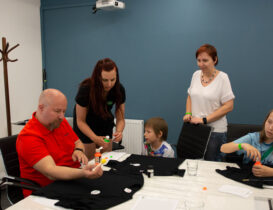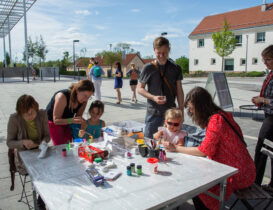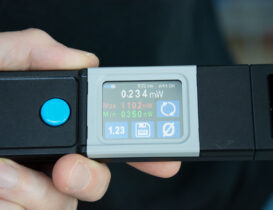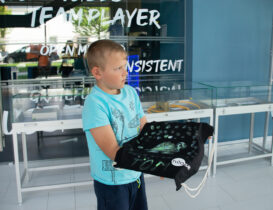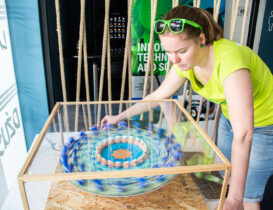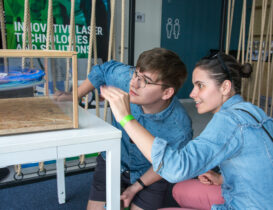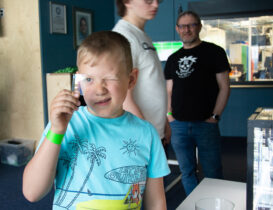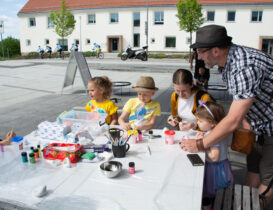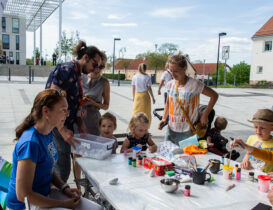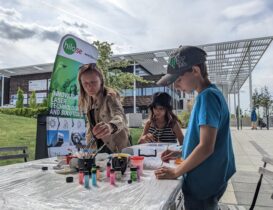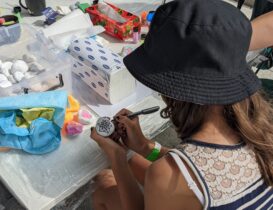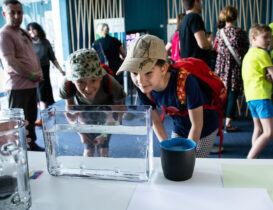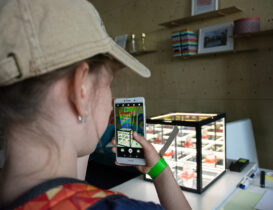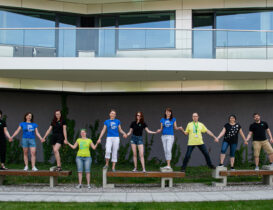More than two hundred visitors celebrated the International Day of Light with us on Saturday. According to UNESCO, it falls on 16 May and commemorates the day in 1960 when Theodore Maiman introduced the very first laser to the world. The HiLASE Centre has been regularly involved in the celebration of this day since 2018, when the initiative was launched. Take a look at how the celebrations went this year!
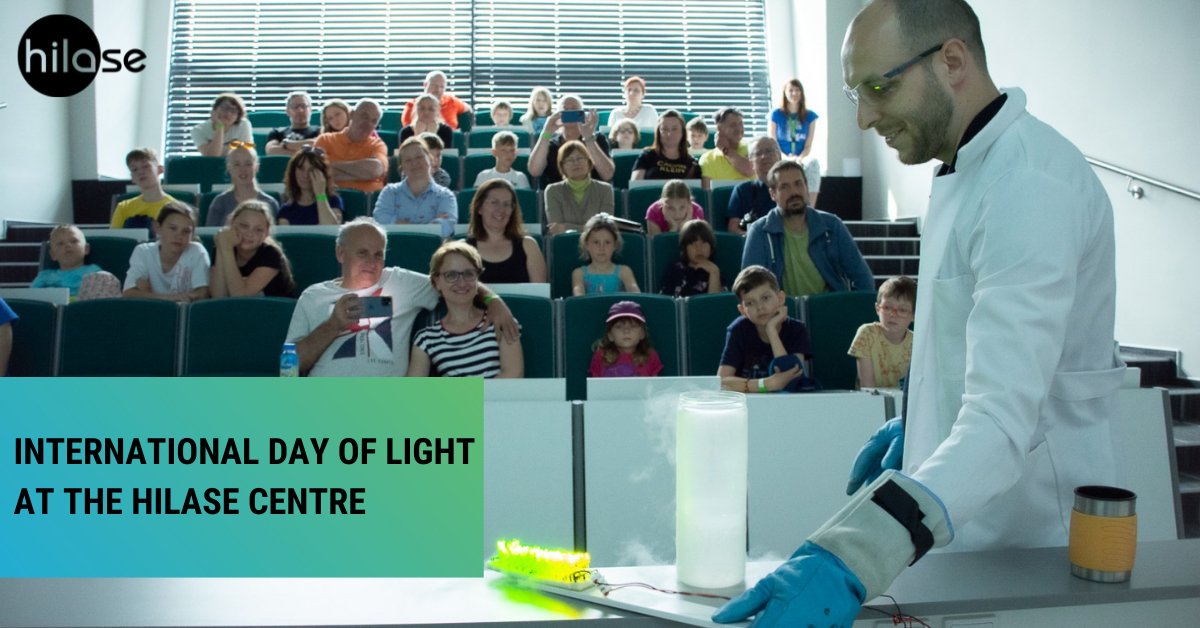
During the open day, visitors got a glimpse into the laser labs and found out what our scientists are working on. “The laser is a perfect example of how a scientific discovery can become a tremendous benefit to society, whether in communications, healthcare or elsewhere. At the HiLASE Centre, we strive to make sure that our applications are first and foremost practical and find use in the real world. Using lasers, we can, for example, develop surfaces that repel water or bacteria, or strengthen metal parts so that they last longer,” explains Tomáš Mocek, head of the HiLASE Centre.
For the science enthusiasts, we prepared a lecture entitled From Candle to Laser, where, thanks to our colleague Jan Kaufman, they learned in an engaging way, for example, about what all preceded the actual development of the laser and what lasers are used for today.
Young and old visitors alike enjoyed creative and educational workshops (for example, on laser safety or interesting optical phenomena) and were able to try out several experiments in our light lab. “The interest of the little researchers was overwhelming, which makes me very happy. I hope that thanks to this and similar events we can arouse children’s interest in science and that we may meet them one day in research,” says Dominika Jochcová, a PhD student at the HiLASE Centre and also the head of the Saturday light lab.
If you missed the International Day of Light this year, but you enjoy science, come and see us from 2 to 4 June at the Science Fair (joint stand of the Institute of Physics of the CAS).


